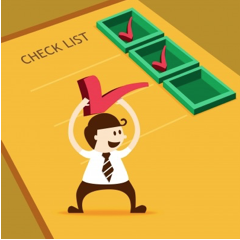Own a business? It’s your lucky day! Here’s a way to stretch more money out of 2015…..
What hopes do you have for your business in the New Year? Would you like to grow, or add new locations? Getting a grip on your cash flow, inventory, and day-to-day operations is the best step that you can take. By changing to a live inventory system with a POS system you can understand everything that’s happening with your business.
First Steps
New Year’s resolutions are typically easy to make but hard to follow through on, but making a resolution to implement live inventory tracking and point-of-sale system is an easier resolution to keep than you think. Point-of-sale systems are no longer a $20,000 proposition piled with a nightmare web of expensive maintenance contracts and proprietary software. In fact, it is possible to obtain a complete point-of-sale system for around $1500. With the addition of a barcode label and a barcode scanner you’ll have everything you need in order to start taking your inventory live right out of the box. You want to avoid the hazards of assembling a POS bit by bit, which Microsoft points out can cost you a great deal of extra money that you need not spend.
Whatever your reasons for implementing this new system you should know that it is one of the best things you could do for your business. Shrinkage, a perpetual problem in retail and wholesale, can be effectively addressed through inventory control information systems. The Houston Chronicle states that by tying inventory to sales, it is possible to stop or reduce shrinkage that is costing you money every single day. It is estimated that some $13 billion a year is lost to shoplifting alone, that leaves out shrinkage from internal theft, and data entry errors. Getting started is easy:
- Make a master list of every item in your storefront, stockroom or warehouse. You might want to do these on old-fashioned index cards with information such as SKU/item number, unit of measure, purchase cost, vendor information, and a basic description.
- Using your barcode label printer (many eCommerce vendors like Shopify offer good printers and scanners) and barcoding software to generate barcodes for any inventory that does not already have them. Typically an SKU or item number will appear along with the barcode from the OEM, you will need to make sure this matches the SKU or item number that you have previously recorded.
- You will also want to record the location of the items. For example, you may want to denote specific locations where an item is stocked. You may wish to have one barcode for items on the shelf in your stockroom, and a different barcode for items in your storefront. In the case of having more than one storefront you can even designate which store and which stockroom where the item currently resides.
- Now you’re ready to start the initial inventory. You may want to close down in order to complete this part. It can be very disruptive to business, which is why many stores will close down at the end of the year in order to take their inventory. If you cannot close down set aside a certain amount of goods in a separate inventory to keep the business operational.
- Make sure you have enough staff and barcode scanners, and bring everyone together to set out the order of march. Assign your personnel to their sections and tackle the job sequentially and systematically.
- Mark every completed location with a sticker so that it is not counted again, and you may also wish to have the staff member’s initials on each sticker so that you will know who counted each section.
- Reconcile the inventory against your accounting balances. You may find substantial discrepancies between what you have in your actual inventory and what you have in the books. Take the time to find out what is causing the discrepancies, and then get ready to go live with your new inventory process.
Garbage In, Garbage Out
You get out what you put in. Your new inventory process is only as good as the data that you enter. Especially with an online business….you opened it up to be efficient, so keeping your data as clean as possible by instituting policies with your sales, stock, and management people will keep things moving smoothly. Getting a better grip on your inventory will allow you to streamline your ordering processes, without overextending your cash flow or choking the flow of goods from the vendor to your business to your customer. You will also eliminate what Logistics Management says is one of the key overlooked problems of excess inventory, the expense of maintaining it. Inventory requires storage, square footage, maintenance, and other staff attentions. Excess inventory costs in these areas can over time exceed the value of the actual merchandise. By streamlining your order processes you’ll be able to understand what items are moving, what items are not, and what you really need to mark down and get rid of. While you might not ever completely eliminate clunkers, at least you will know what does and does not work for you.
Leave a Reply